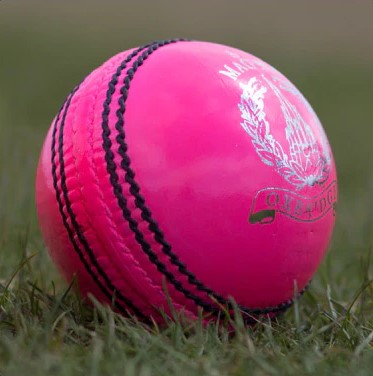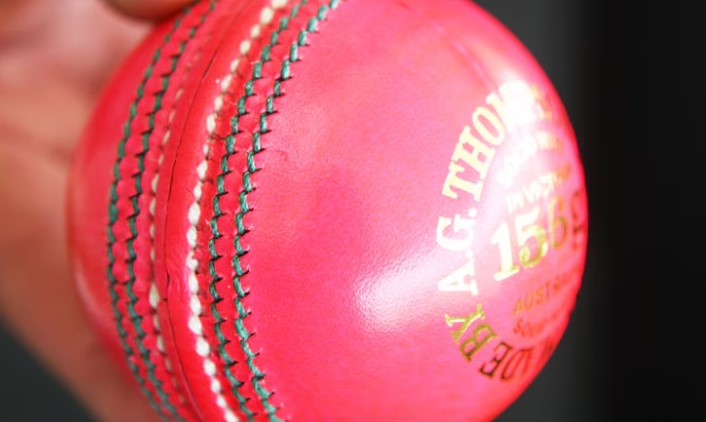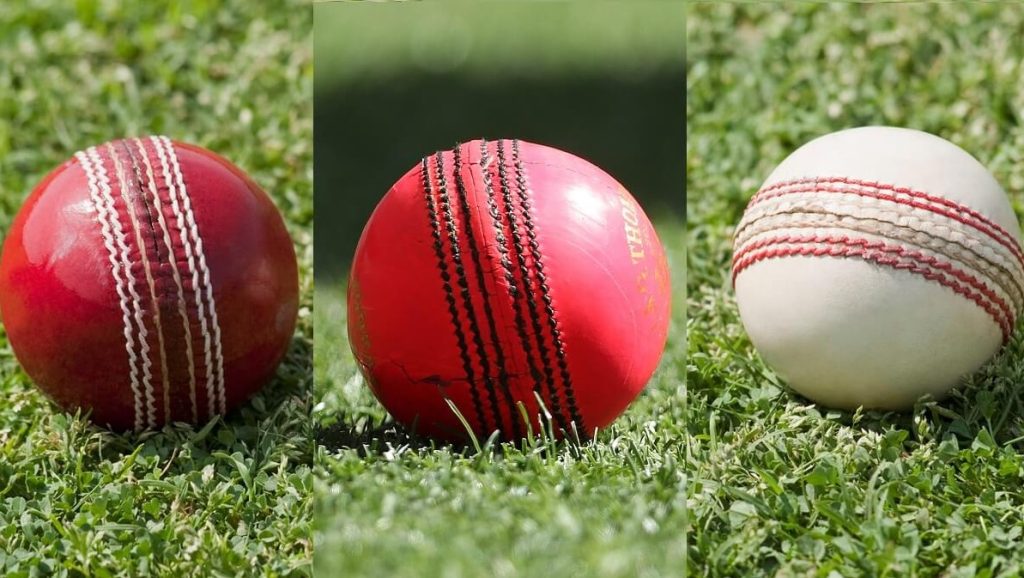Pink Ball: Cricket is a sport that evolves with technology, playing conditions, and the preferences of teams and fans. One of the most significant innovations in recent years has been the introduction of the pink ball for day-night matches. The advent of pink ball cricket has added a new dimension to the game, particularly in the twilight hours, where the light changes and the ball behaves unpredictably.
As the game enters these twilight hours, the conditions become challenging for batsmen. The pink ball swings and seams more, the lighting fluctuates, and visibility can become an issue. In this article, we will look at how batsmen can tackle these unique conditions to excel in pink ball cricket, focusing on the crucial twilight period.
The Twilight Hours In Pink Ball Cricket

The twilight period in a day-night cricket match refers to the time between the transition from daylight to night. This phase happens when the sun sets and the lighting changes, affecting both visibility and the way the ball behaves. The pink ball was designed to address some of the challenges associated with day-night cricket, particularly its visibility under artificial lighting. However, it still exhibits a lot of movement in the twilight hours.
Key Characteristics Of Twilight Hours:
Lighting Changes: As the natural light fades, the artificial lighting takes over. The balance between the two creates an unstable environment for both bowlers and batsmen.
Ball Movement: The pink ball is more prone to swinging and seaming, particularly during the twilight period. The moisture in the air as the sun sets can enhance the ball’s movement.
Visibility Issues: As daylight fades, visibility can become a challenge for batsmen. The ball can be harder to pick up for the eyes, which increases the difficulty in playing shots with precision.
Psychological Pressure: The fading light and changing conditions can cause batsmen to become anxious or unsettled, leading to mistakes.
The Importance Of The Twilight Period
The twilight period is critical because it is often when bowlers make their most significant impact in a day-night match. The ball is more likely to swing or seam, and the batsmen have to be extra cautious. Batting during twilight hours can be more demanding than facing bowlers in the daytime or under lights at night, especially for players who are not used to these challenging conditions.
Historically, batting in the twilight period has proven to be the most challenging phase of a day-night game. Teams with experience in these conditions often thrive, while less experienced batsmen may struggle. For batsmen to master the twilight hours in pink ball cricket, they must focus on technical adjustments, mental preparation, and strategic planning.
How Batsmen Should Tackle Twilight Hours

Here are some strategies that batsmen can use to thrive in the twilight period of pink ball cricket:
1. Focus On Technique
A solid batting technique is essential when facing a swinging or seaming ball. Batsmen need to adjust their stance and approach during the twilight hours to account for the movement of the ball.
Front Foot Play: The batsman should try to play from the crease, getting on the front foot early to meet the ball under their eyes. This helps in both judging the movement and playing with more control.
Soft Hands: Keeping soft hands when playing the ball helps reduce the chances of edging it to the slip fielders or the keeper. This is particularly important during the twilight period when the ball may swing unpredictably.
Footwork: Precise and quick footwork becomes even more critical during twilight hours. Batsmen should ensure they are moving their feet to the pitch of the ball to avoid playing it late.
Key Technical Adjustments For Twilight Cricket
| Technical Aspect | Recommended Approach |
|---|---|
| Footwork | Quick and precise, especially for front-foot play. |
| Batting Stance | Slightly more upright to cover both swing and seam. |
| Soft Hands | Play the ball gently with minimal force to avoid edges. |
| Head Position | Keep the head still, with eyes focused on the ball. |
2. Adapt To The Swing And Seam Movement

The pink ball, particularly in twilight conditions, is known for its swing and seam movement. Batsmen need to adapt to this behavior by staying watchful and adjusting their timing. There are several tactics for dealing with the movement of the pink ball:
Watch the Ball: As with any form of cricket, watching the ball closely is key to playing it successfully. During twilight, however, batsmen should be extra vigilant as the ball moves erratically in the air.
Leave the Ball: In the twilight period, it is essential to leave the ball outside the off-stump, especially when it is swinging away. Playing the ball too early or late can lead to an edge, making it crucial to trust the judgment of whether to play or leave.
Adjust the Batting Grip: To counter swing, batsmen can adjust their grip, especially when facing a bowler who is making the ball move substantially in the air.
Tactics for Dealing with Swing and Seam
| Tactic | Recommended Approach |
|---|---|
| Leave the Ball | Leave balls outside off-stump, particularly during swing. |
| Watch the Ball Closely | Focus on the seam to gauge whether it is swinging in or out. |
| Adapt Grip | Modify the grip to ensure better control over swing and seam. |
| Minimize Unforced Errors | Play with caution, particularly on deliveries that seem dangerous. |
3. Mental Toughness
Batting during twilight hours can be psychologically taxing. The combination of the fading light, ball movement, and pressure to score can affect a batsman’s mental focus. To succeed, batsmen need to cultivate mental resilience.

Stay Calm: It’s crucial not to panic during the twilight period. Batsmen should remain calm, trust their preparation, and stay focused on the basics of their game.
Positive Intent: While caution is needed, batsmen should not fall into defensive modes entirely. They need to strike a balance between being watchful and playing aggressive when the opportunity arises.
Mental Strategies for Twilight Cricket
| Mental Strategy | Recommended Approach |
|---|---|
| Stay Calm | Keep emotions in check to avoid panicking during tough phases. |
| Positive Intent | Play with purpose while being selective about scoring shots. |
| Patience | Wait for the right ball and conditions to attack. |
| Focus on Basics | Stick to the fundamentals of good batting technique. |
4. Know Your Limits And Plan
Batsmen must also be strategic in terms of the types of deliveries they choose to play. During the twilight period, taking unnecessary risks can lead to a quick dismissal. Instead, they should be mindful of their strengths and play accordingly.
Know Your Strengths: Batsmen should focus on their strengths and avoid playing shots that they are not comfortable with, especially against the moving ball.
Batting Partnerships: If batting with a partner, communicating and understanding each other’s game becomes crucial. Rotating the strike and building partnerships can help relieve some of the pressure that comes with twilight batting.
Batting Plans for Twilight Conditions

| Strategy | Recommended Approach |
|---|---|
| Stick to Strengths | Focus on shots you are comfortable with. Avoid risky plays. |
| Rotating the Strike | Keep the scoreboard ticking through singles and placements. |
| Partnership Building | Communicate with your partner for building pressure relief. |
Mastering the twilight hours of pink ball cricket requires batsmen to adapt both technically and mentally to the changing conditions. The twilight period challenges players in unique ways— from dealing with swing and seam movement to managing the psychological pressures of low visibility. By focusing on sound techniques, mental toughness, and careful planning, batsmen can tackle this difficult phase and ensure their team is in a strong position.
In the era of day-night cricket with the pink ball, a batsman’s ability to navigate the twilight hours effectively can be the difference between success and failure. Teams that master these conditions will have an edge, making it crucial for batsmen to continuously hone their skills and strategies to succeed under the lights.

